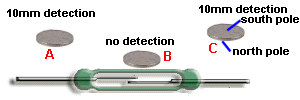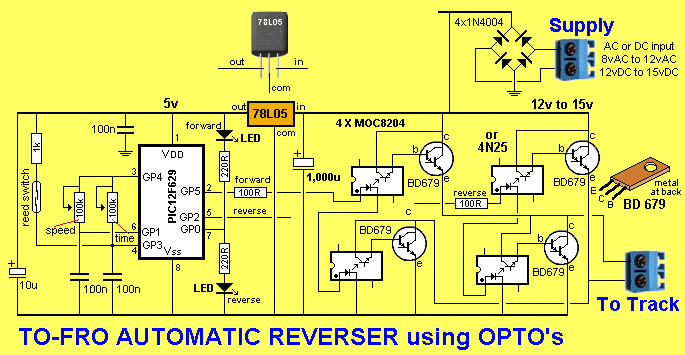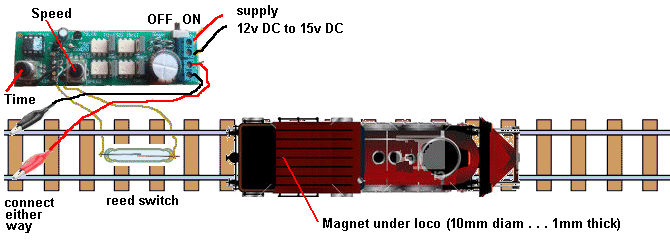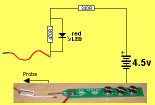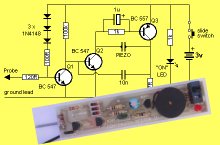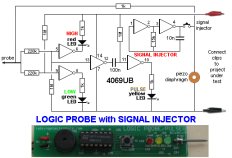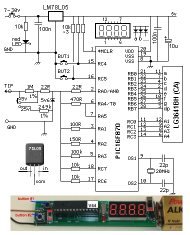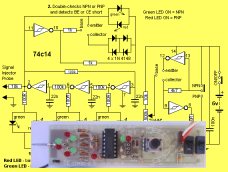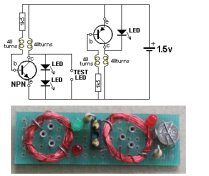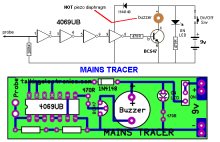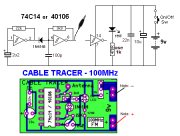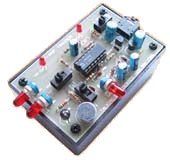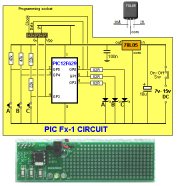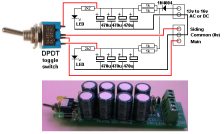|
TO - FROMKII |
|
|
This module uses two opto-couplers to turn ON the two left-side transistors to make the loco travel forwards of the two right-side transistors for reverse. It is an AUTOMATIC REVERSER and will accept AC or DC input from 12v to 15v DC or up to 12v AC (this becomes 17v DC via the module).
It also has a THROTTLE CONTROL to produce very slow travel via PWM with increments from just about zero to nearly full speed. The PWM ensures the loco will start at a very low setting.
The reed switch is designed to provide REGISTRATION. In other words it sets the train for the same number of seconds and (hopefully) the same distance on each cycle.
To make sure this happens, the loco is "inched" backwards towards the reed switch and it then moves forwards, to re-start the cycle.
SIMPLE SET-UP
You only need an isolated section of track. Simply connect the two alligator clips to the rails around either way.
Fit the magnet under the loco at a position that will activate the reed switch.
Set the speed to the lowest value and the time to the shortest number of seconds (and then increase the time to get higher than zero time). Increase both values to suit the length of track you are using. This will allow the train to constantly shuttle from one end to the other.
Ideally you can use a small track-maintenance vehicle for this. Make sure the track is clean as a light maintenance vehicle will not make very good contact with the rails if any oxidation is present.
Turn the module ON and the train will move slowly towards the reed switch (maybe backwards) in short bursts until the reed switch is reached. The loco will stop and move in the other direction and then the electronics in the module will detect the speed and time you have set on the two pots.
The speed of the train will depend on the setting of the SPEED pot and it will continue to move for the number of seconds as determined by the TIME setting.
The train will then stop at the other end of the track and reverse at the same speed and for the same number of seconds back to the starting position.
It will then "inch" towards the reed switch and start the cycle again.
It will take a few adjustments to get the speed and time adjusted correctly for the length of track you are using. And then it will repeat the action, again and again.
4 APPLICATIONS
The project is designed for a number of different applications:
1. It can be used to test a length of track without having to constantly be at the controller. You can move freely around the layout and view the train from different angles.
2. It can be used to produce movement in the background (such as a second train) without having to attend to the train. This is called "attract mode."
3. It can be set-up for children to use the layout without having to monitor their use of the controls.
4. It can be used show the layout in an exhibition in the "attract mode."
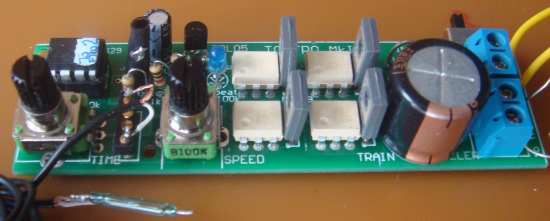
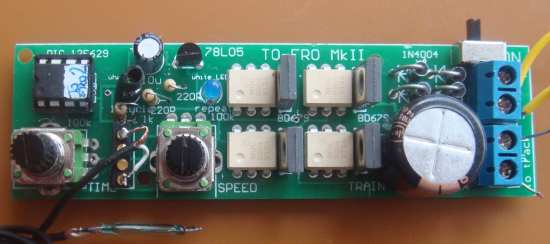
The reed switch is now included
with the module.
The TIME pot and the SPEED is set (and adjusted) so
the train reaches the end of the track - then stops - then
returns to the starting position.
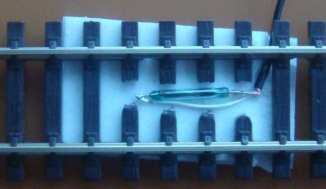
The reed switch is fitted
along the length of the track
because the centre of the reed switch is not sensitive.
Allow 15cm of track past the reed switch to prevent
the train running out of track.
